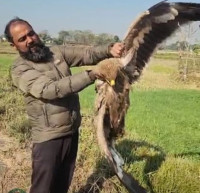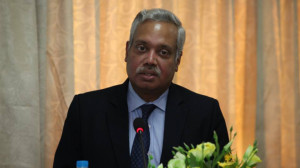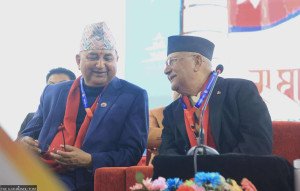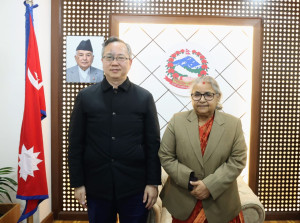National
Revered Shaligram Shila at risk from rising waters caused by dam sedimentation
Sediment buildup behind Kaligandaki A Hydropower Project dam is raising river levels and threatening the shrine and safety of nearby settlements.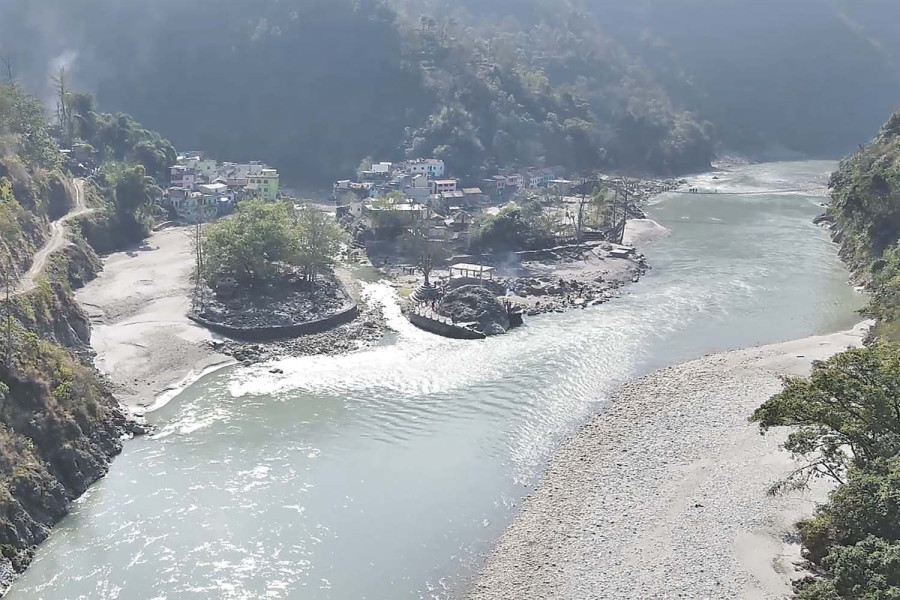
Suman Jung Thapa
The huge black rock revered as Shaligram Shila (ammonite) at Setibeni on the trijunction of Parbat, Syangja and Gulmi districts, is facing an existential threat as sediment buildup from the Kaligandaki ‘A’ Hydropower Project raises the river’s water level year after year.
Located just 7 kilometres upstream from the 144-megawatt hydel project’s dam, the revered monolith—worshipped by thousands during major Hindu festivals—now spends much of the monsoon season submerged.
Locals say the riverbank market of Setibeni, home to over 200 households along with a school and local government offices, is also increasingly at risk of flooding due to the hydropower dam.
“Large boulders, gravel and sand have piled up above the dam, causing the river to rise,” said Dilliram Bhusal of Setibeni. “The project promised to clear the sediment but has ignored the issue. If this continues, not just the Shaligram Shila but the entire market could be under water.”
Local leaders have repeatedly requested multiple authorities for intervention, but their pleas have gone unheard.
“Settlements along the riverbank have already been displaced. Those of us in the market area live in constant fear,” said Man Bahadur Basyal, chair of ward 6 of the Bihadi Rural Municipality. He urged the government to treat sediment removal not only as a protective measure but also as a potential source of income.
Before the dam’s construction in the late 1990s, the Shaligram Shila stood firmly above the Kaligandaki river, its full form visible and accessible for circumambulation by worshippers. These days, only its upper portion can be seen, even in winter, making ritual worship incomplete.
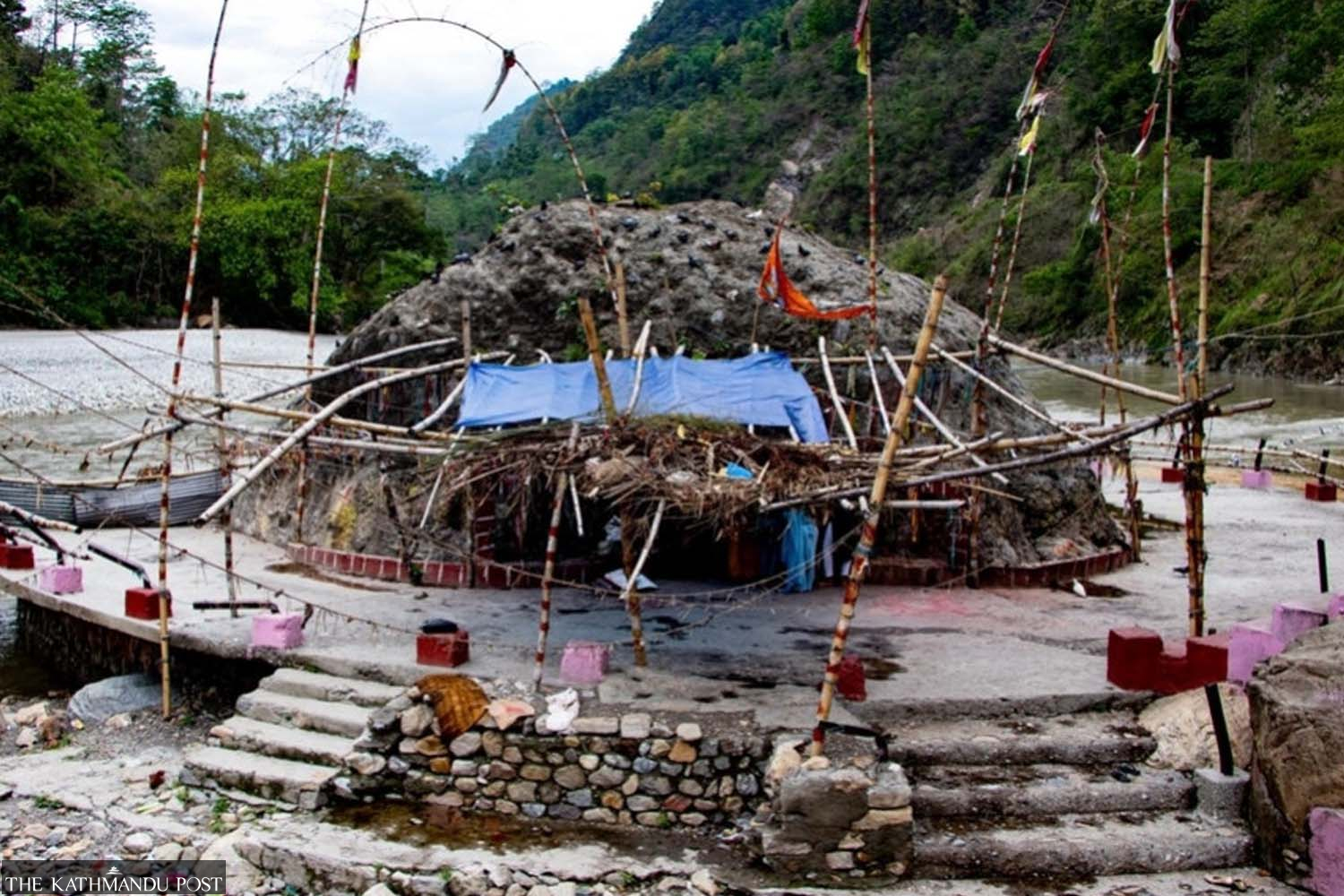
“It’s hard to convince visitors that this is the same great Shaligram,” Basyal said.
A district-level meeting last year involving officials from Parbat, Syangja and Gulmi districts discussed possible rescue measures, including dredging the silted riverbed, which lies in Gulmi district, to restore the old flow. But the proposal was rejected by Gulmi district officials.
The rock’s plight has wider cultural implications. During major festivals including Harishayani Ekadashi, Haribodhini Ekadashi, Baisakh Sankranti, Maghe Sankranti and other major festivals pilgrims from various parts of Nepal and India flock to Setibeni, believing that prayers offered here are fulfilled.
It is also a major religious site, preferred by people from nearby districts as a venue for weddings and other cultural events.
But with the river constantly eroding its banks and protective embankments proving ineffective, access to the revered shrine has become increasingly difficult.
The Kaligandaki ‘A’ project, construction of which began in 1997 and which started generating electricity in 2002, is operated by the Nepal Electricity Authority and produces 144 megawatts of power. While it remained as the major hydel project for the national energy supply for many years until a few years ago, locals say it has come at a high cost to heritage and safety.
“This is not just about a rock,” said Bhusal. “It’s about a living tradition, a community, and a sacred history slowly being swallowed by risin




 17.12°C Kathmandu
17.12°C Kathmandu




